12 Types of Olives, Including the Best for Snacking, Stuffing, and Martinis
Also, why some olives are green, some black, and some purple ... but only one is red.
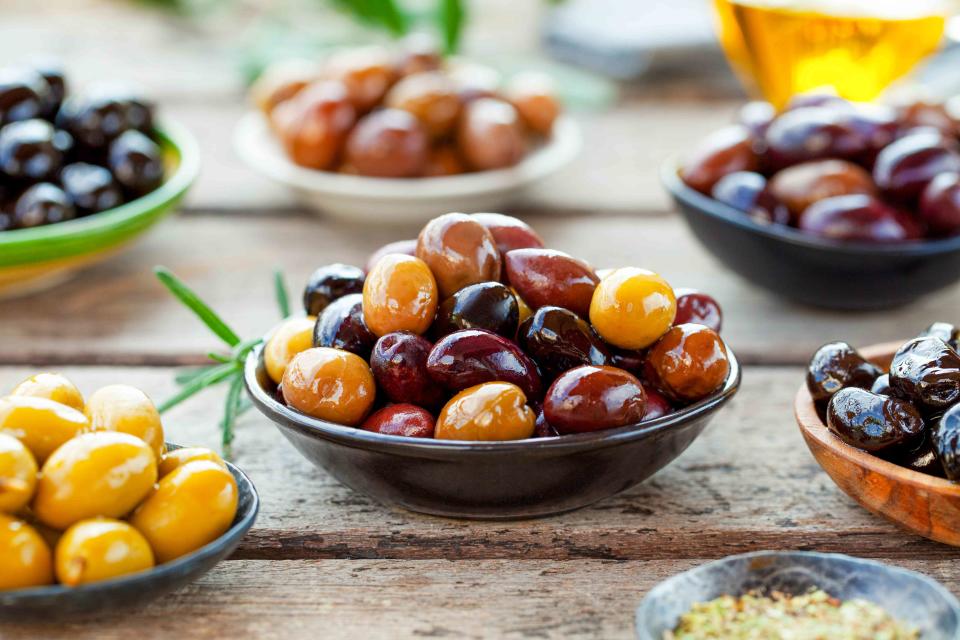
AnnaPustynnikova / GETTY IMAGES
If you want to infuse your food with a taste of the Mediterranean, reach for olives. When you add various types of olives to your meal, you're also putting a piece of history on your plate. Olives can be traced back millennia to when ancient civilizations, including the Greeks, Romans, and Egyptians, cultivated them.
Olive trees bear different types of fruit (yes, all olives are fruit). From the buttery and mild Castelvano to the tangy and subtly smoky Gaeta to the robust and fruity Kalamata, the olive family showcases a diverse palate of flavors and complements a wide array of dishes from many different cuisines. But what kind of olives should you seek when cooking, snacking, or assembling a charcuterie board? Our guide to olives explores the various methods of curing and the significance of color—and then goes into detail about the different types of olives you'll want to add to your grocery list.
Related: 27 Recipes to Make Using Salty, Delicious Olives
How Olives Are Cured
Picking and eating olives straight off the tree might sound like a romantic scene, but fresh olives are actually too bitter to enjoy. That's why curing olives is "essential to transforming the naturally bitter fruit into the delicious treat we enjoy," says Petar Dzaja, an expert on olives, olive trees, and olive oil, and owner of Olive Knowledge. Dzaja explains the most common methods for curing olives. Each brings out unique flavor profiles.
Water Curing: "Olives are soaked in water, which is changed daily to remove bitterness," says Dzaja. This curing method gives olives a milder taste.
Brine Curing: "Olives are submerged in a saltwater solution, which not only removes bitterness but also imparts a salty flavor." If you love salty foods, brined olives will likely please your palate.
Lye Curing: Dzaja says that this method uses alkaline compounds referred to as lye to cure olives, "making them extremely delicious." This manner of treating olives "requires careful handling due to the caustic nature of the lye," he adds.
Dry Salt Curing: Olives are layered with salt, drawing out moisture and intensifying flavors. "The result is a shriveled, intensely flavored olive," Dzaja says. (Thassos olives are an example of this curing method.)
Color Differences in Olives
What's in a color? Quite a lot when it comes to olives. "The color of an olive—green, purple, or black—speaks volumes about its maturity and the method used in its processing," says Sarah Bridenstine, baker and blogger at Baking Kneads. She explains that green olives are picked while young, black olives are fully ripened on the tree, and purple olives represent the transition phase between green and black in terms of ripeness. "Interestingly, not all black olives begin green. Some darken due to exposure to air during curing, adding another layer of intrigue to their story," she says.
Types of Olives
Arbequina
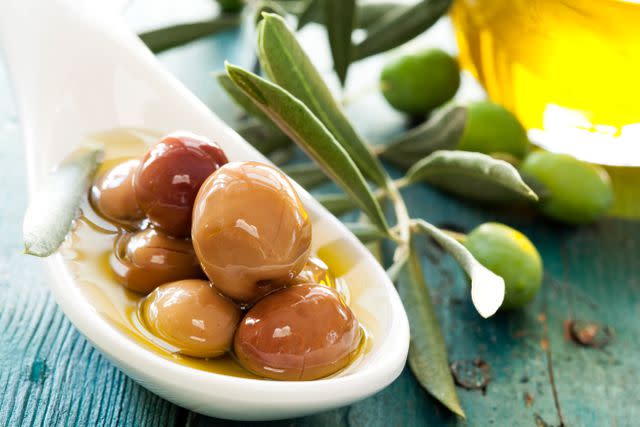
seb_ra / GETTY IMAGES
Region: Catalonia, Spain
Color: Dark purple to black
Taste: Fruity, buttery, nutty
With a buttery, rich, yet fruity taste and a firm, meaty texture, Arbequina olives are good for snacking and often added to salads. Known as a Spanish olive, Arbequina are also now grown in California, says Autumn Hilliard-Knapp, marketing professional and horticulture specialist at Perfect Plants, where the Arbequina olive tree is one of their most popular trees.
Castelvetrano
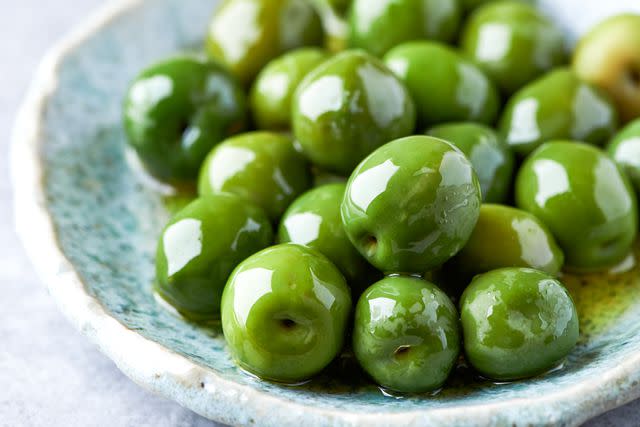
barol16 / GETTY IMAGES
Region: Sicily, Italy
Color: Green
Taste: Buttery, meaty, mild
Popular for cheese platters and antipasto platters, these bright green olives have a mild, buttery flavor and are both salty and sweet, says Hilliard-Knapp. She says they also make a delicious addition to pizza, pasta, and salads. Castelvetrano are also known as Nocellara del Belice and are grown in Valle del Belice, a region in southwestern Sicily.
We love them in Warm Olives With Cracked Coriander or in Orecchiette, Celery, and Olive Salad With Ricotta Salata.
Cerignola

SOMKHANA CHADPAKDEE / GETTY IMAGES
Region: Italy
Color: Green, black, or red
Taste: Buttery, tart
Cerignola olives are the largest olives. They are grown in Puglia, Italy. Their large size makes them easy to stuff, and many people fill them with cheese or meat. They are also often served chopped in salad or pasta. Try Cerignola olives with mozzarella, capers, or anchovies. Hilliard-Knapp says that green Cerignola olives are the firmest and black are the softest. The red version of Cerignola is striking, but it is not natural; the olives are dyed with food coloring.
Gaeta
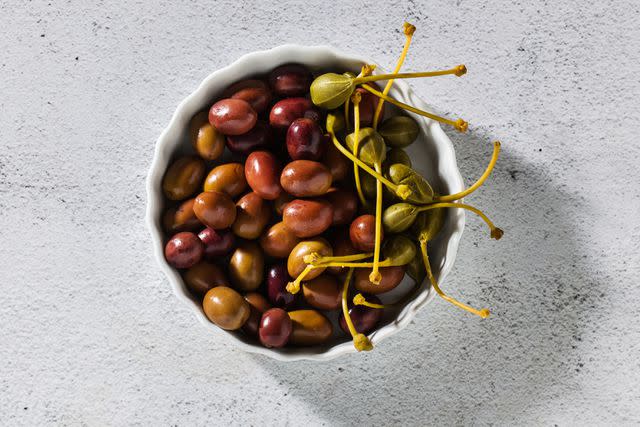
IriGri8 / GETTY IMAGES
Region: Italy
Color: Deep purple to black
Taste: Tart, salty, smoky
Gaeta olives are sweet, tender, and wrinkled in appearance, says Dzaja. He adds they are perfect to use in pasta dishes. Try them in Tomato and Olive Penne or Pappardelle Pasta with Olives, Thyme, and Lemon.
Kalamata
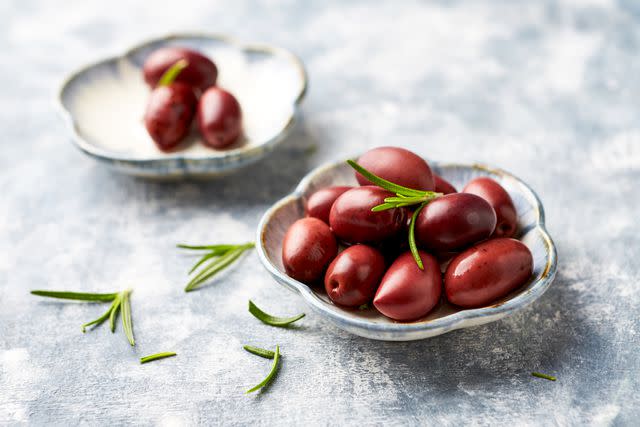
Eugeniusz Dudzinski / GETTY IMAGES
Region: Greece
Color: Deep purple
Taste: Fruity, salty, hints of red wine
Often used in Greek salads, Kalamata olives have an intense, slightly salty yet fruity taste. They are a good all-round olive, popular for snacking and also good atop pizza. This tasty olive originates in the south of Greece, in the Peloponnese, says Hilliard-Knapp.
Liguria
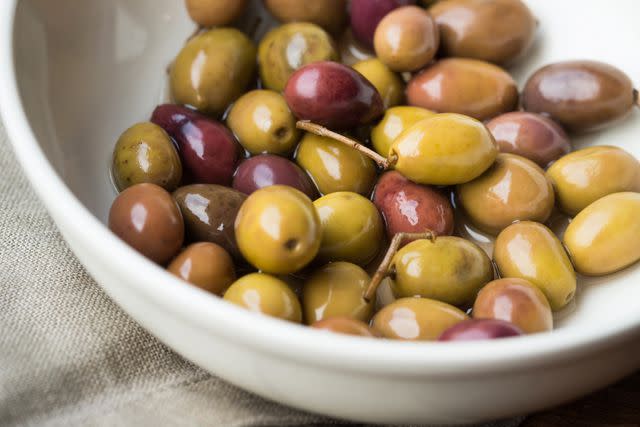
Quanthem / GETTY IMAGES
Region: Italy
Color: Green, purple, brown, and black
Taste: Sweet, mild, nutty
These versatile olives are "great for any application," says Kam Talebi, CEO of The Butcher's Tale and Salsa a La Salsa in Minneapolis, and other restaurants. Ligurian olives are grown just across the Italian border from where Niçoise olives are cultivated. Talebi says they are cured with herbs, such as rosemary and thyme, for additional flavor notes.
Manzanilla
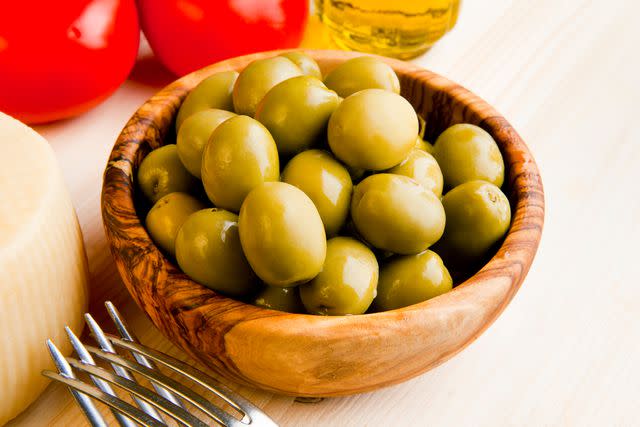
IriGri8 / GETTY IMAGES
Region: Spain
Color: Green
Taste: Smoky, bitter, nutty
This type of green olive is often stuffed with pimentos. You may also find them garnishing a martini. The Manzanilla olive comes from Sevilla, Spain and has a smoky briny flavor that is slightly bitter or nutty. Try cooking with manzanilla olives in our Beef Braciole with Olives and Raisins.
Niçoise
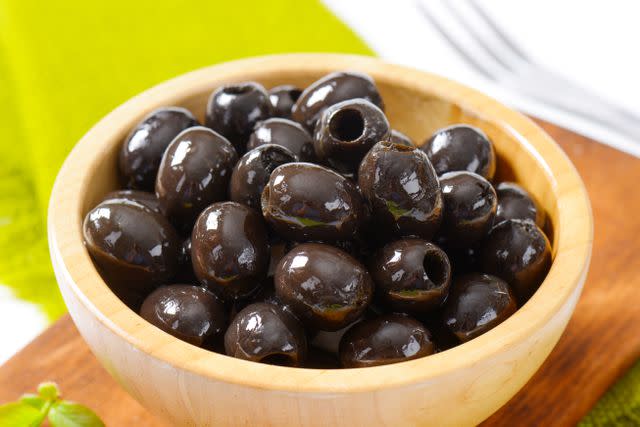
milanfoto / GETTY IMAGES
Region: France
Color: Deep purple to dark brown
Taste: Fruity, salty, briny
Small and salty, these olives from southern France have a touch of sourness. Their unique flavor profile makes them a popular addition to seafood dishes, and they are often used on pizzas, but their best-known role must be in Niçoise salads. Talebi says their strong herbal flavor can be too much for some people.
Nyons
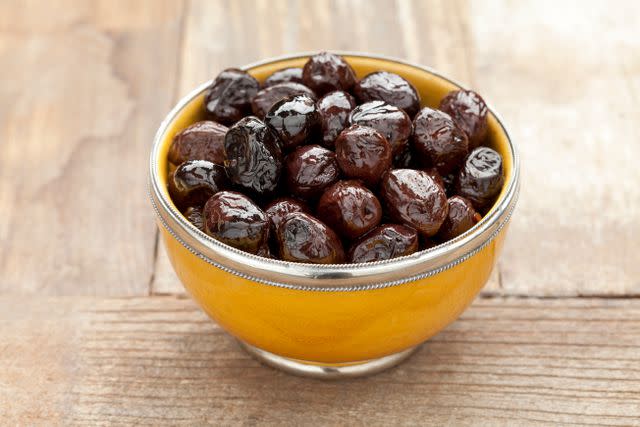
PicturePartners / GETTY IMAGES
Region: France
Color: Dark purple to black
Taste: Earthy, bitter, mildly sweet
This very dark-colored, almost black, olive is grown in Nyons, France. “Their skin is slightly wrinkled, and they are known for their earthy and sweet, meaty flavor," says Hilliard-Knapp. She enjoys them straight from the jar for snacking. "They can also be made into a tapenade or added to rice dishes," she says.
Picholine
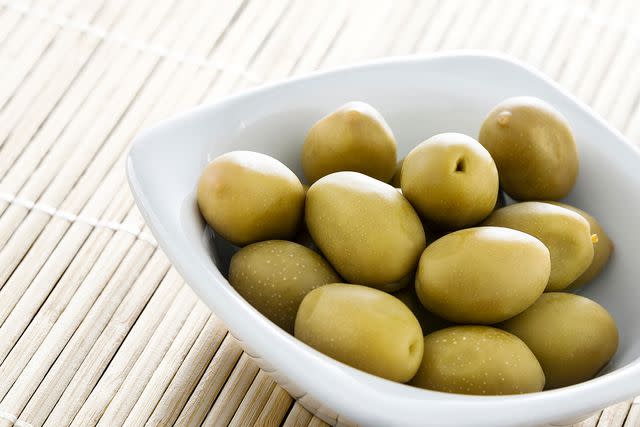
atm2003 / GETTY IMAGES
Region: France and Morocco
Color: Green
Taste: Citrus, herbal, tangy
With "a crisp, lemony flavor with a hint of anise," according to Bridenstine, These large olives are perfect for appetizers and also good in stews. They are cultivated in both Morocco and the French Riviera.
Thassos
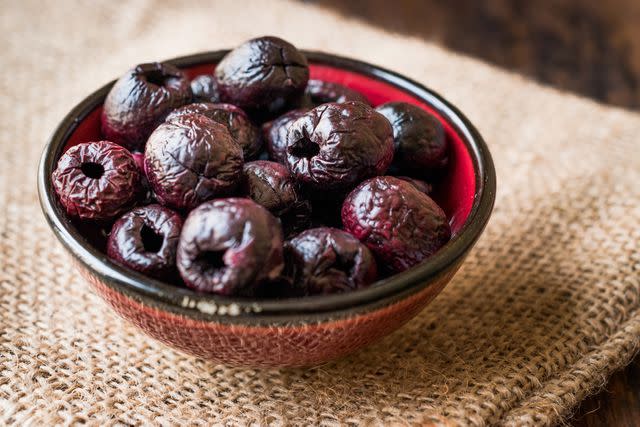
alpaksoy / GETTY IMAGES
Region: Greece
Color: Dark brown to black
Taste: Rich, salty, fruity
Bridenstine is a fan of these tasty, dry-cured olives from the Greek island of Thassos. Also known as Throumba olives, they "are thin-skinned and mellow, pairing well with blue cheese and citrus," she says of the wrinkled olives that are raisin-like in appearance and great for snacking.
Canned, Pitted Black Olives

Merrimon / GETTY IMAGES
Region: Varies
Color: Black
Taste: Varies
Not in the same league as other types of olives, canned black olives have their fans. They can elevate a simple salad and be a wonderful pizza topper. Plus, as they come pitted or pre-sliced, you don't need to worry about biting into a pit in your pasta salad. "Some black olives are intentionally made black, even if they aren't fully ripe," adds Dzaja.
Read the original article on Martha Stewart.

